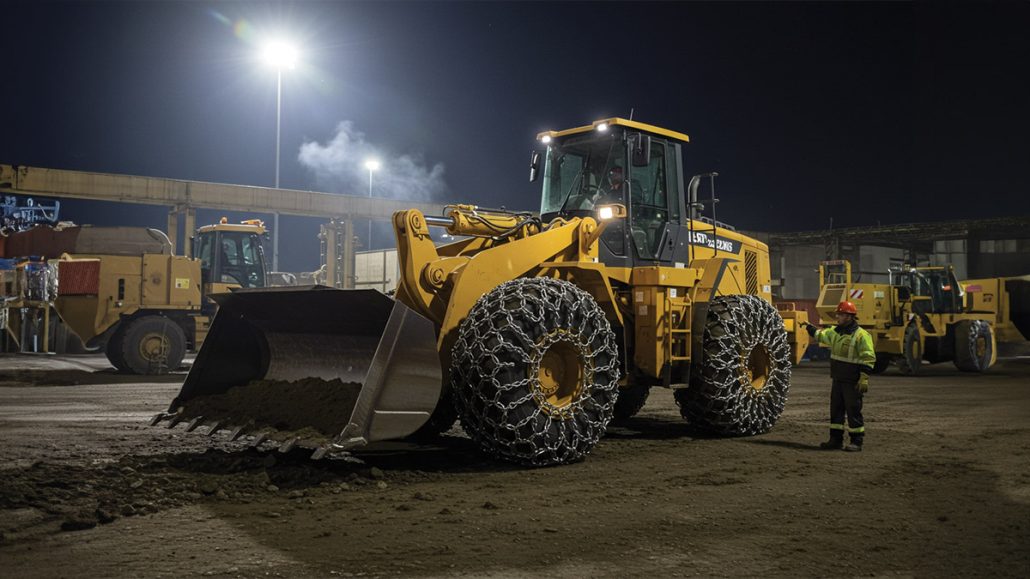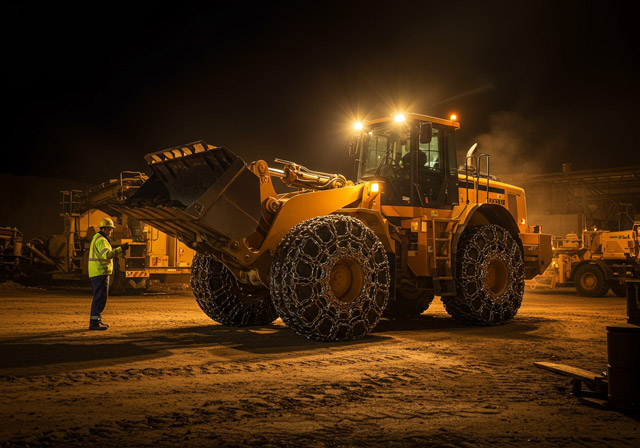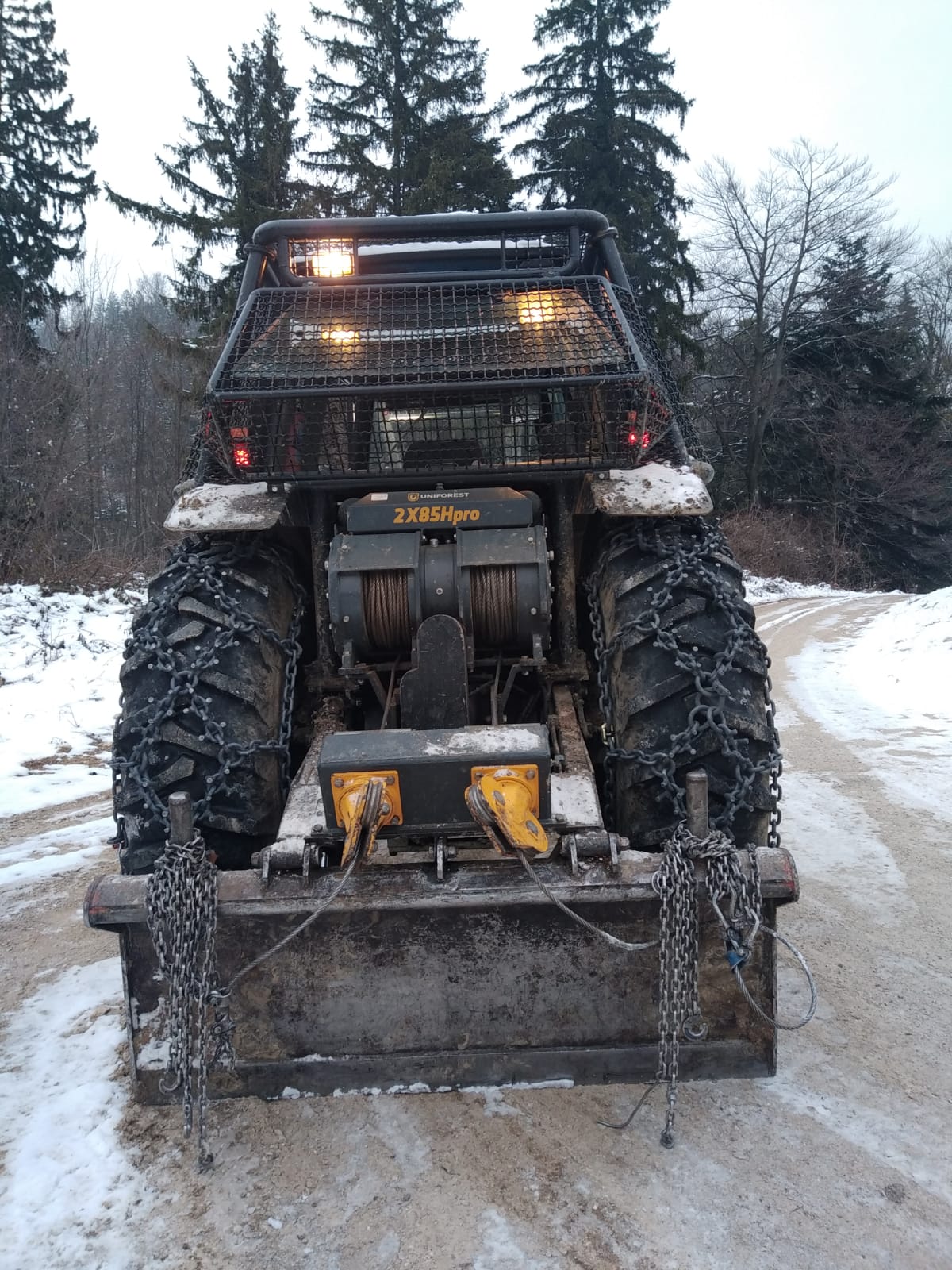Heavy machinery operates under extreme conditions, requiring tire protection chains to ensure durability and performance. These chains protect tires from sharp rocks, rough surfaces, and other damaging elements, preventing premature wear and unexpected breakdowns. Choosing the right tire chains not only enhances operational efficiency but also significantly reduces maintenance costs. However, using the wrong chains can negatively impact machine performance and create safety hazards in challenging work environments.

Advantages of Using Tire Protection Chains in Heavy Machinery
Protecting Tires in Harsh Terrain Conditions
Tire protection chains are essential in industries such as mining, construction, and forestry, where heavy-duty machines operate on abrasive surfaces. Sharp rocks, metallic debris, and rough terrain can cause severe damage to tires, leading to costly replacements. Chains act as a protective layer, absorbing impact and reducing the risk of punctures and cuts. Additionally, they enhance traction, allowing machines to navigate steep slopes and uneven surfaces with greater stability and control.
Reducing Costs and Improving Operational Efficiency
Using high-quality tire chains minimizes downtime caused by frequent tire failures, leading to significant cost savings for businesses. Heavy machinery tires are expensive, and constant replacements can be a financial burden. By extending tire lifespan, chains reduce maintenance expenses and optimize fleet management. Moreover, with improved traction, machines operate more efficiently, reducing fuel consumption and ensuring that projects are completed on schedule.
Selecting the Right Tire Protection Chains for Heavy Machinery
Choosing Chains Based on Machine Type
Tire Chains for Excavators
Excavators frequently encounter a variety of terrains, requiring tire chains that provide both flexibility and durability. These machines need chains that do not restrict movement while offering strong resistance to sharp objects. Steel chains with reinforced links are ideal for excavators working in muddy or rocky environments. Additionally, quick-installation systems should be considered to minimize downtime during operations.

Tire Chains for Loaders and Bulldozers
Loaders and bulldozers are used for material transport, leveling, and heavy lifting, demanding extremely robust chains. These machines require chains with high abrasion resistance to withstand harsh working conditions. Thick steel chains are preferred in mining and quarrying applications, where surfaces are especially rough. Proper chain sizing is also critical; loose chains can damage tires, while overly tight chains can hinder machine movement.
Types of Tire Protection Chains for Different Applications
The Durability of Steel Chains
Steel tire chains are known for their exceptional durability and resistance to wear. They are the best option for environments where machines operate under high stress, such as mines and construction sites. These chains offer long-lasting performance and can withstand extreme pressure. However, their heavyweight requires careful handling during installation and removal. Proper storage and regular maintenance can further extend their lifespan.
The Advantages of Studded Chains
Studded tire chains provide superior traction on icy, snowy, or wet surfaces. They feature metal studs that penetrate slippery ground, preventing machines from skidding. These chains are particularly useful in winter conditions and muddy construction sites. However, they can wear out quickly on dry and solid surfaces, so proper usage guidelines should be followed. Routine inspections and timely replacement of worn-out studs ensure consistent performance.
Key Considerations for Using Tire Protection Chains
Proper Installation Techniques
Ensuring Secure Chain Attachment
Correctly installing tire chains is essential for both safety and efficiency. Chains must fit tightly around the tire without excessive slack to prevent slipping during operation. Unevenly distributed chains can create imbalances, affecting machine stability. After installation, a test run should be conducted to verify proper positioning. Operators should regularly check chain tension and adjust it if necessary to avoid premature wear.
Common Mistakes During Installation
Improper installation can compromise the effectiveness of tire chains, leading to tire damage and reduced traction. One of the most frequent mistakes is installing chains in the wrong direction, which reduces their grip on the ground. Another common issue is failing to secure chains tightly, which can cause them to detach while the machine is in use. To prevent these problems, following the manufacturer’s guidelines and conducting periodic inspections is recommended.

Routine Maintenance and Storage
Preventing Rust and Corrosion
Maintaining tire chains properly ensures their longevity and effectiveness. After use, chains should be cleaned thoroughly to remove dirt, mud, and debris. Rust prevention sprays can be applied to steel chains to protect them from corrosion. Regular maintenance checks will help identify worn-out sections that need replacement before they fail during operation.
Storage Recommendations After Use
When not in use, tire chains should be stored in a dry and cool environment to prevent rust and deformation. Properly coiling and hanging them can prevent tangling, making them easier to reinstall when needed. Keeping chains in protective cases or applying lubrication before storage can further extend their durability. A well-maintained set of chains will be ready for optimal performance in the next operation.


